
X-ray of the titanium plate inserted in January 2017 to bridge the comminuted break of my left collarbone
I’d travelled to Sayulita with the intention of picking up surfing where I’d left off nearly 10 years ago in Australia (as a beginner who was getting regular beat downs from the ocean due to my lack of fitness/surfing experience). In Blog 4 last week however, I mentioned that I’d reluctantly postponed my 5-day surf course with Sayulita Surf Camps because I wasn’t convinced that my broken collarbone had sufficiently recovered from surgery just 4 months earlier. Well, that didn’t stop me in the end, but it’s a bit more complicated than that…
Stage one was simply getting back in the ocean. I’d been swimming regularly in my home town’s local sports centre as part of my shoulder recovery before I’d left for Mexico, but a 1.3-metre-deep chlorinated pool with lifeguards is a far cry from the salty, unpatrolled waves breaking in Sayulita. It seems stupid when I look back on it now, but I didn’t know quite how well my recovering shoulder would react to being smashed by those first few waves.
Turns out I was being hugely over-cautious, it was actually great fun to play around in the waves and be chucked about by the power of the ocean again, the shoulder felt fine. Result.
After spending a few more days swimming I figured it was time to get a little more adventurous (and Fred the Frenchman was surfing everyday which was giving me a major case of FOMO – Fear Of Missing Out!) Now, despite my love for action sports I’m generally quite a cautious individual, so logically stage two was to practice with one of the bodyboards that my AirBnB had available.
FYI surfers don’t like bodyboarders! Stage two was short lived; the waves dissipated for a few days so I just ended up floating around a fairly flat ocean with a bodyboard…this wasn’t quite going to plan.
Part 2: Preparation
During the first 7-10 days of swimming/floating around like a lemon with a bodyboard, I had also enjoyed another new experience: my first Yoga class. Thanks to Paraiso Yoga’s free Friday community class (taught by Talia: Yogi-in-training) I was able to get an easy-to-digest introduction to the world of yoga without paying full price. Whilst the community class is free, it’s still polite to offer a donation as you leave the studio, good karma goes a long way!
Normal class prices start at $170 pesos (about £6.80 GBP) for an hour’s class, ranging from yoga styles involving lots of stretching positions to those which are more meditation based. I ended up going to a few classes before I got back on a surfboard; I found the classes to be very beneficial and must say I enjoyed the experiences, I could get into this yoga thing.
So, after some decent preparation it turns out that a fairly flat ocean was exactly what I needed in the end. Having borrowed Fred’s surfboard for an afternoon’s paddle I was finally confident that my shoulder was:
- strong enough to be smashed by waves and swim back to shore in the event of a problem
- strong enough to maintain the body position required to balance my body/chest on the board and propel myself through the water
With Fred’s encouragement and a renewed purpose to get back on a surfboard after 10 years, I got myself down to Lunazul quick-smart to finally rent my own board. Everyone at Lunazul is super friendly and keen to make sure customers are well looked after; special thanks to Eduardo for the mutually beneficial marketing material exchange, i.e. sticker swap.
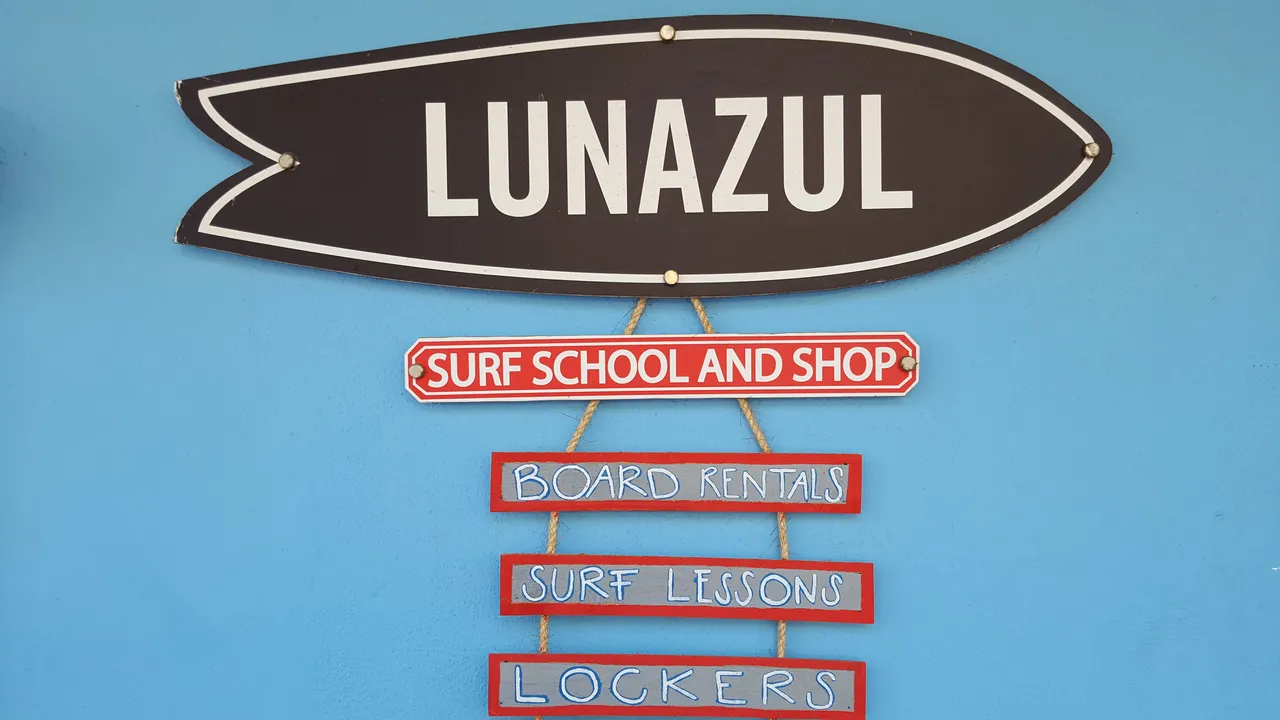
Lunazul (or Luna Azul: ‘Blue Moon’)

Inside the shop
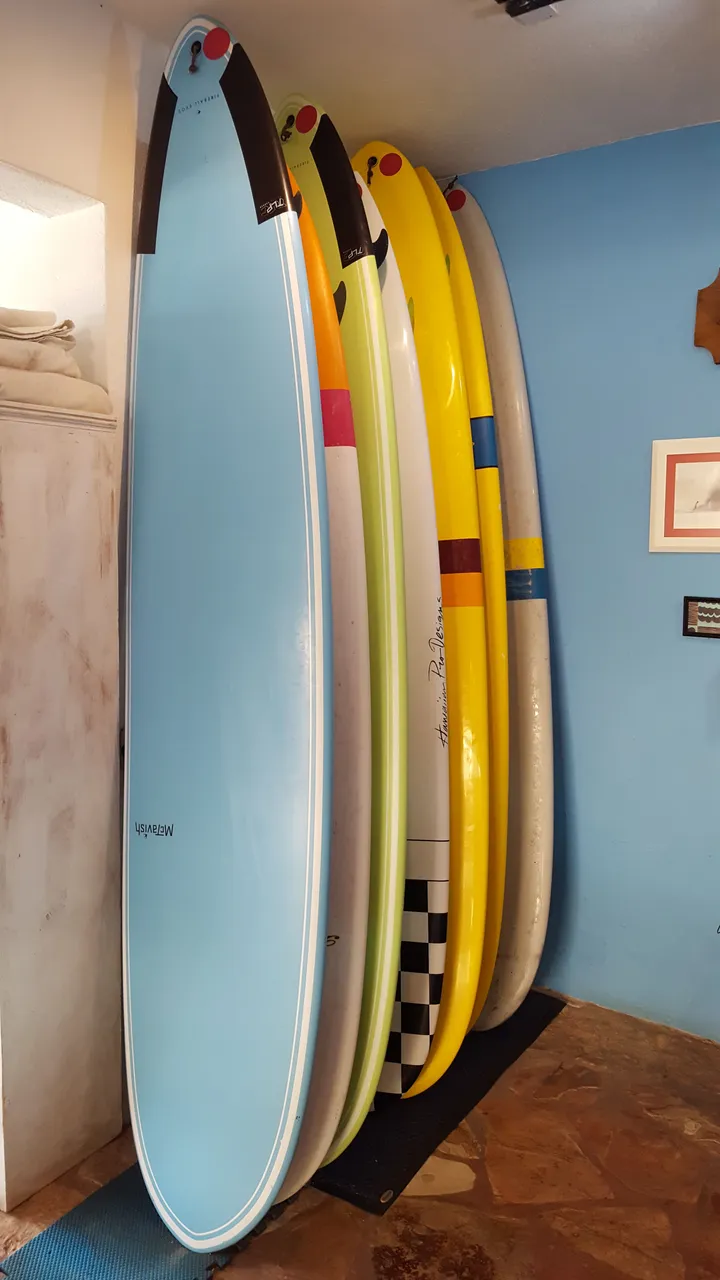
Choose your ‘pontoon’
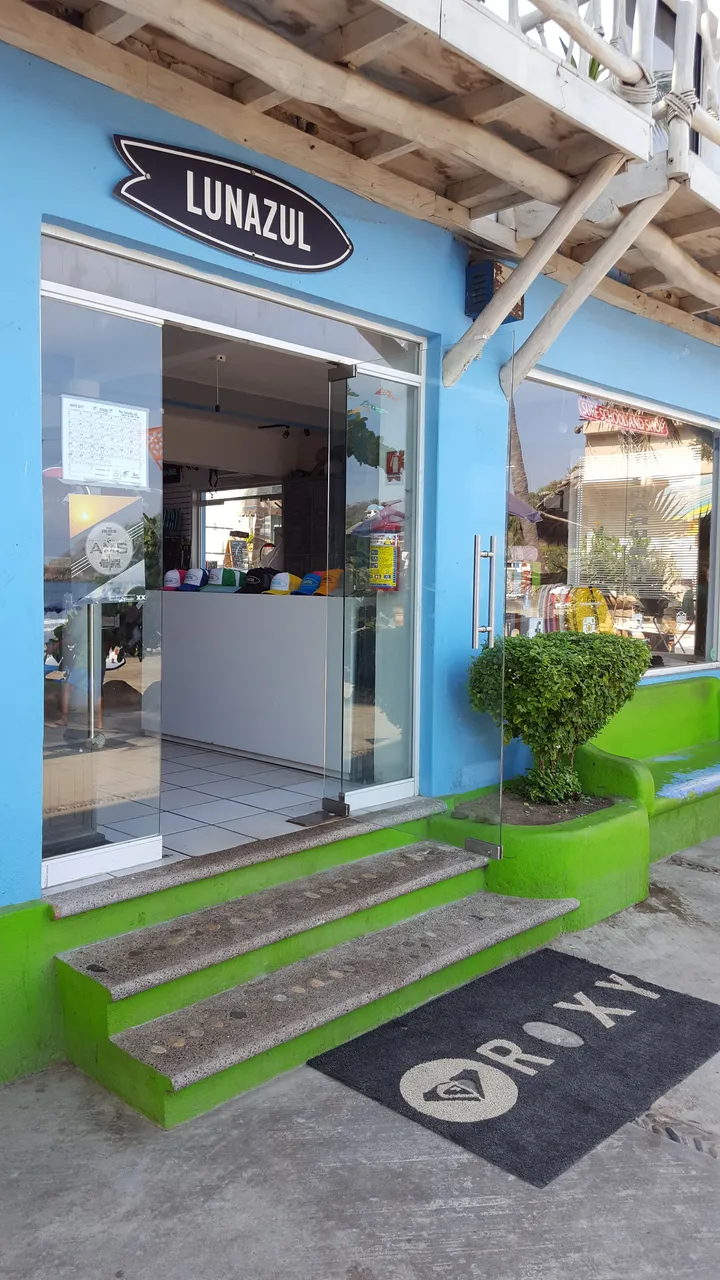
A one day surfboard rental with Lunazul is normally $300 pesos (about £12 GBP), but the more days you rent for, the bigger the discount you get. As someone returning to surfing after such a long time (and someone who was pretty rubbish back then anyway) I opted for quite a long board at 8 feet 4 inches. Less of a surfboard and more of a pontoon, the larger board makes it easier:
to balance and float
to paddle in general
to catch a wave and have a large, stable platform to stand on
Reassuringly (for my ego) I’m told that even experienced surfers tend to go back to a larger board if they haven’t surfed for a long time; sounds good to me at any rate.
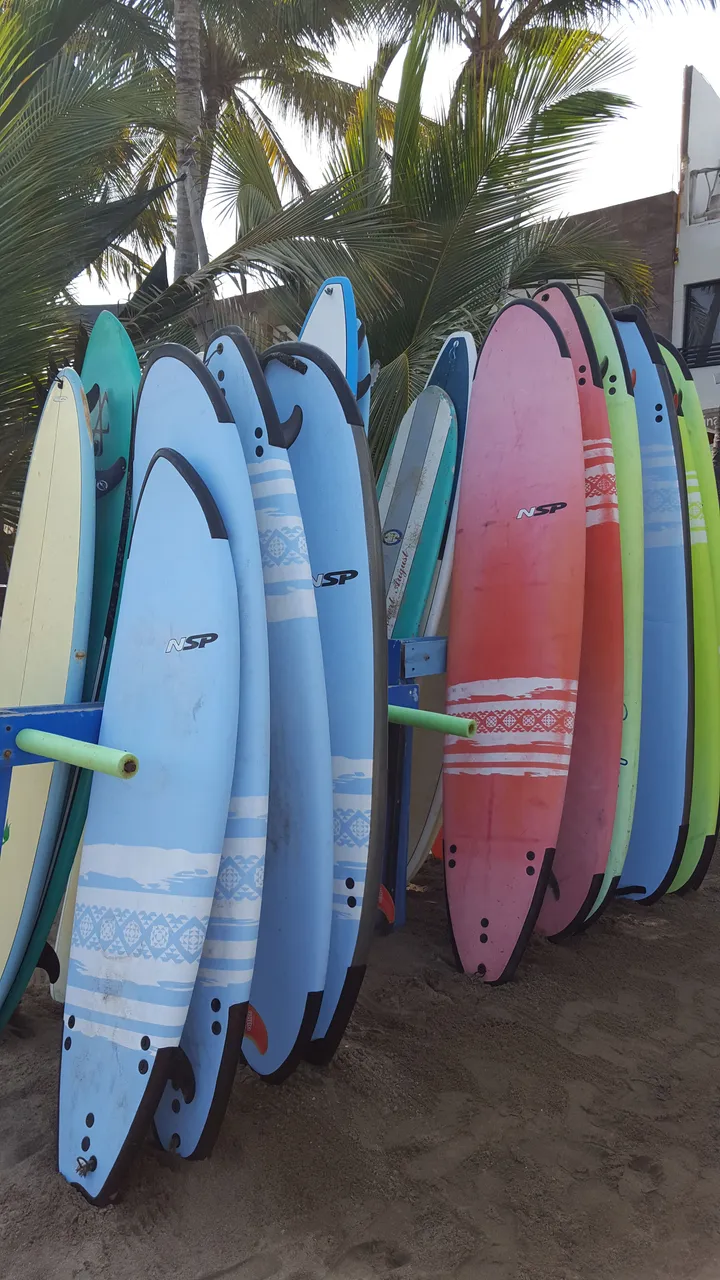
You know you’re a newbie when your board has a handle on either end of it :/
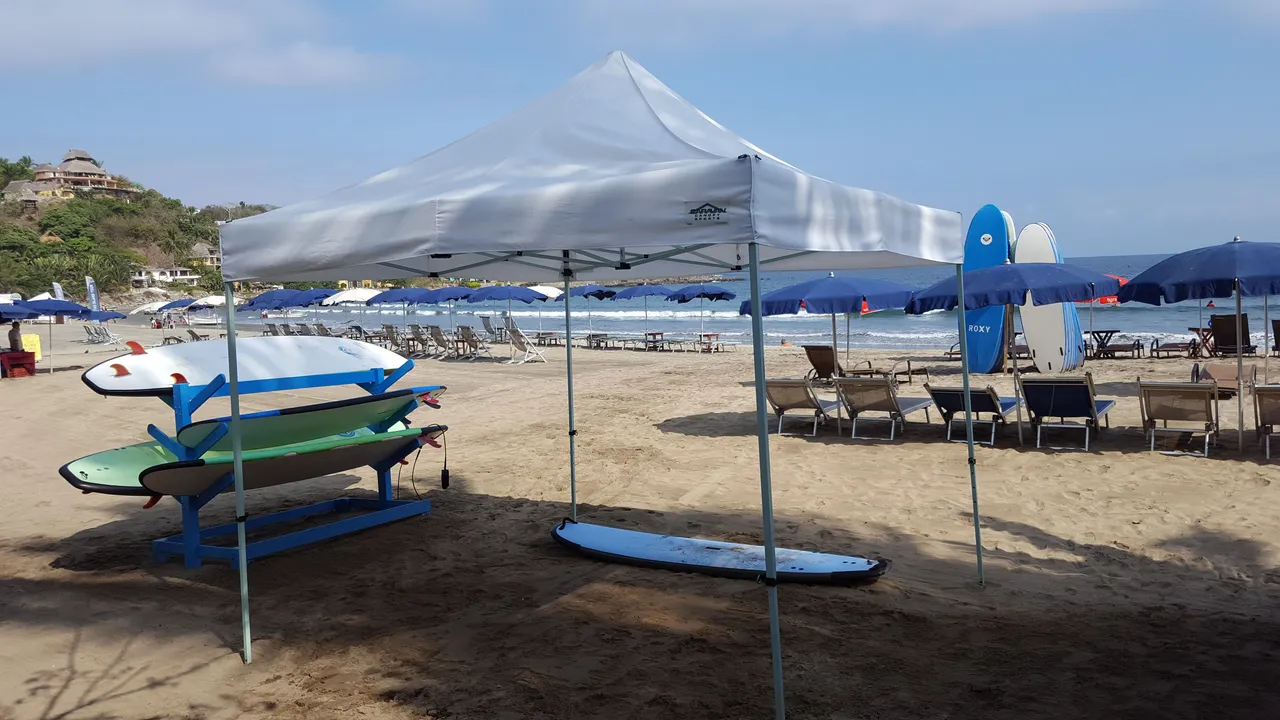
View from the back of Lunazul
Time to bloody-well get on with it!
Part 3: SURFING
Day one: I’ll be honest, it was a pretty basic start. Since the ocean was so calm there were no waves big enough to surf breaking near the shore, if I was going to do this I’d have to paddle out to the ‘line-up’ (area in the water where all surfers congregate and basically float around waiting for waves to appear). On paper that sounds like the easiest thing in the world, but on day one I was still a little anxious about getting too near anyone who actually knew what they were doing, after all I’d never been in a line-up before so I was pretty sure I’d just get in the way.
In the end I decided to float around just a little way off from the main line-up and pay close attention to what everyone else was doing. Hey, I’m planning to be the Action Sports Nomad for quite a few years if I can, no sense in smashing myself to pieces on day one, right? I did manage to time a paddling effort just right on one rogue wave that came my way, caught the wave, and instantly fell over when I went to stand up…but hey, I’m happy with a 1% improvement per day, so it should only take me 99 more days to become half decent, right?
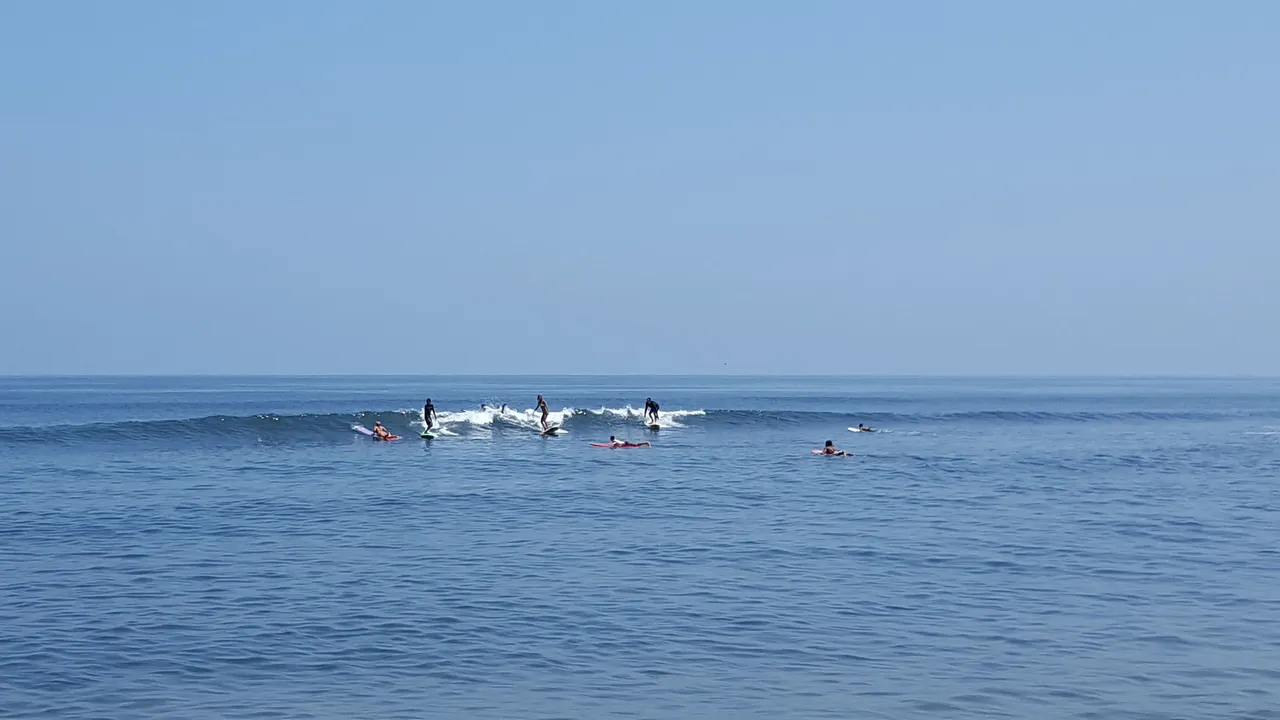
Surfers on the Sayulita waves
Day two: Jumping straight on the board and paddling out quickly to the line-up makes me feel like I know what I’m doing (when I clearly don’t…yet). I feel much more confident sat straddling the board waiting for waves too. It might sound like sitting on a surfboard in the open water should be easy, but it takes a certain amount of core control and balance to remain upright. It can even be pretty funny at times; every now and again you’ll hear a large splash as someone has a lapse in concentration and slips off their board into the sea, only to surface a second or two later looking sheepish as they clamber back on.
With few real waves it’s fine for me to just float around in the main line-up, I’ll only get in the way if I make an attempt to paddle for a wave. After most of the line-up catch a couple, I finally decide it’s now or never and set off paddling for a wave with just one other surfer off to my left.
Things start well, I catch the wave, so does the other guy, I get up on my left foot with right knee still planted; now we’re talking. But directly ahead of me in the path of the wave is another surfer paddling back to the line-up, okay no worries, but now the other guy who caught the wave with me is closing in on my left, this is getting sketchy! Not yet being proficient at ‘how to stop surfing a wave and control where my board goes’ I’m sure that if I bail now my board will smash into the paddling surfer, but if I carry on surfing then the guy to my left will crash into me…ummm…
Basically, the guy to my left had to bail, which in surfing etiquette terms means I’m just plain rude because someone to your left has priority over you on a wave breaking to the right. At least I didn’t have to bail and smash some other poor bugger in the face though, that definitely would have been worse. Fred’s only comment is to ask why the hell I didn’t just stand up and surf the bloody wave properly!
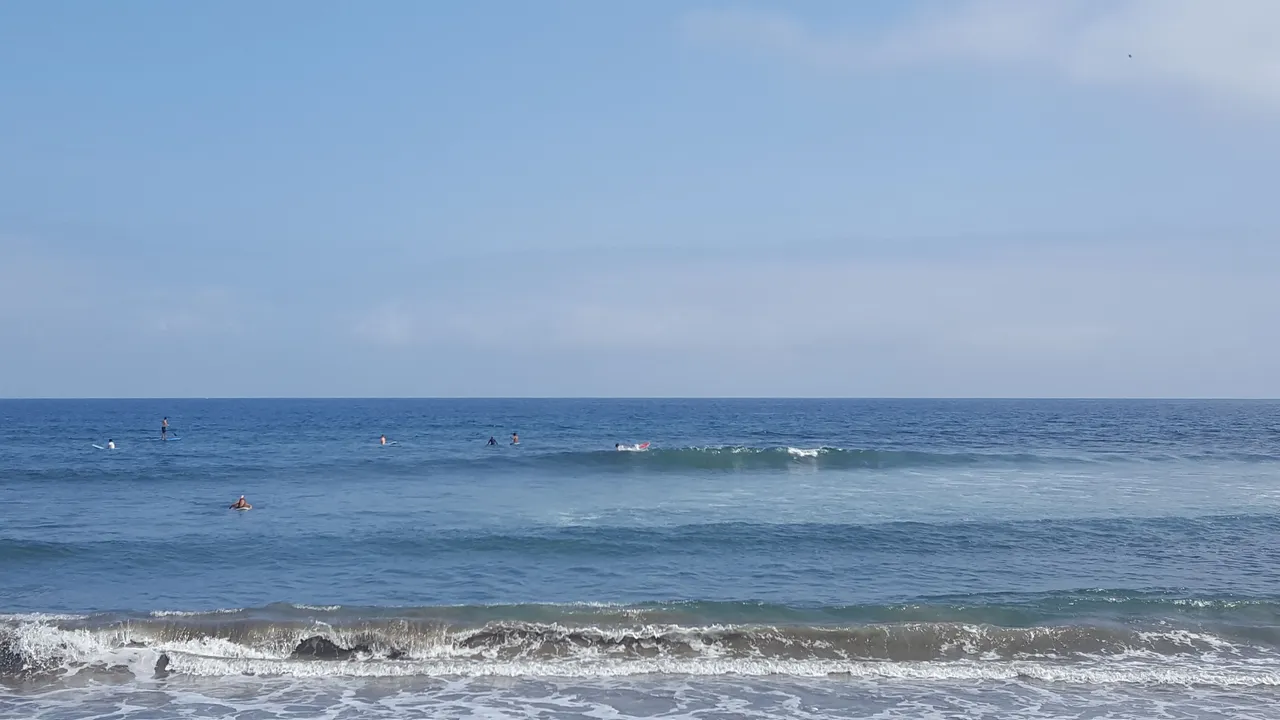
Quiet day out there
Day three: Pumped to get back out there and nail this thing properly, I’m frustrated to find that the ribs on my left side are really painful once I start paddling. I must have done something to them in the last couple of days without realising; oh well, no pain no gain.
Things are a bit more dramatic in terms of waves too; some swell rolls in just as I get to the line-up which causes the other surfers to begin paddling back and forth like maniacs, letting out hoots and hollers as they spot the incoming waves. There’s a palpable sense of energy and excitement which floods my system with adrenaline when I spot the size of the waves, now’s my chance to really give this a go: oohrah!
This hormonally triggered courage is quickly balanced out by a healthy dose of fear as I watch a couple of surfboards be ejected from the back of the last big wave, their riders being munched somewhere inside that massive wall of water that I just floated over the top of…gulp. To make matters worse, the bigger waves are starting to break earlier than I’m used to, so I’m now having to quickly learn how to get me and my pontoon of a surfboard safely over/through/past them any way I can. I know what duck diving is, but that’s just not possible with my behemoth of a board.
The set of bigger waves passes and I get a moment to compose myself for the next one. Here we go. Wave, paddle, catch, left foot, STAND! FINALLY! It’s only about 7 or 8 seconds of riding the wave but it’s the first time I’ve ever ridden a ‘proper wave’ and I’m stoked!
The rest of my day surfing goes downhill from there unfortunately. As another set of bigger and consistent waves roll in I find myself tumbled towards the rocks near the shore. Treading water amidst the rocks, I end up slicing a big chunk out of my left foot along with a host of smaller cuts and bruises, and it’s only thanks to some panicked paddling that I manage to escape the next barrage. This surfing malarkey isn’t for the faint-hearted!
Ribs smashed, foot gouged, knee bleeding, but stoked at catching my first proper wave, I decide it’s time to quit while I’m ahead.
I feel like this particular sunset has been well earned…
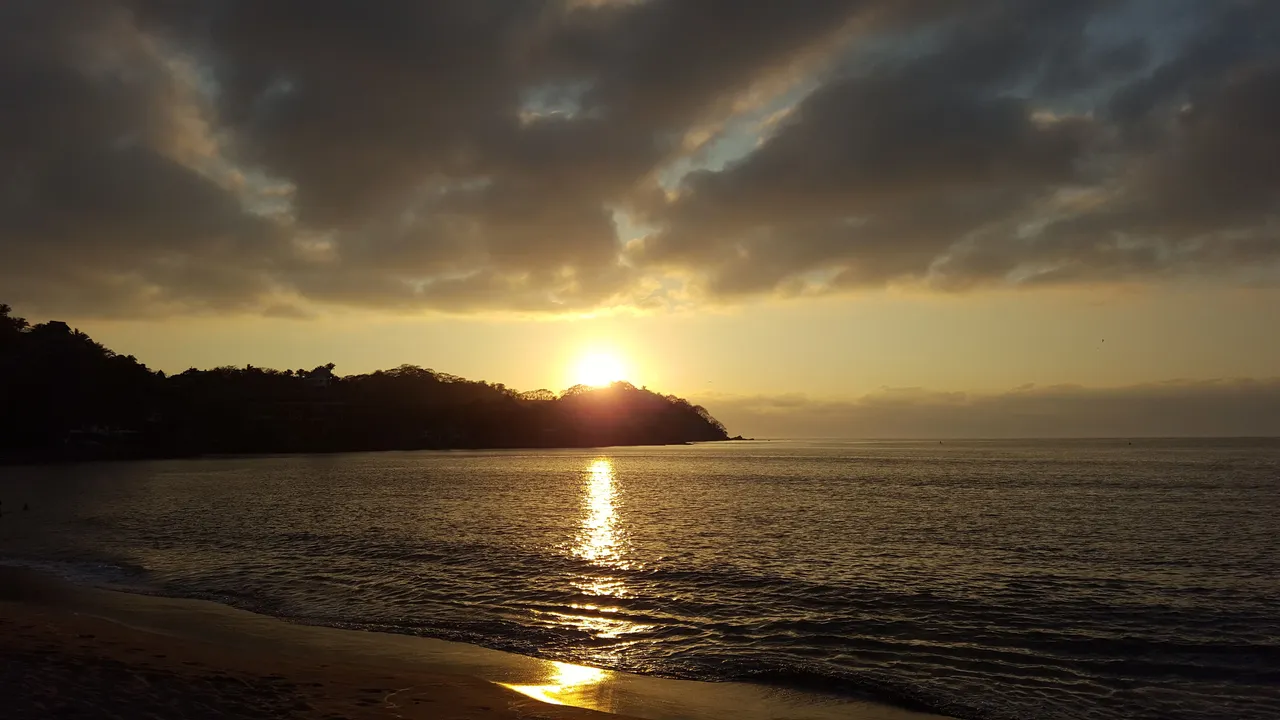
Sayulita sunset
(If you enjoyed this blog then please feel free to ‘like’ the Action Sports Nomad Facebook page)